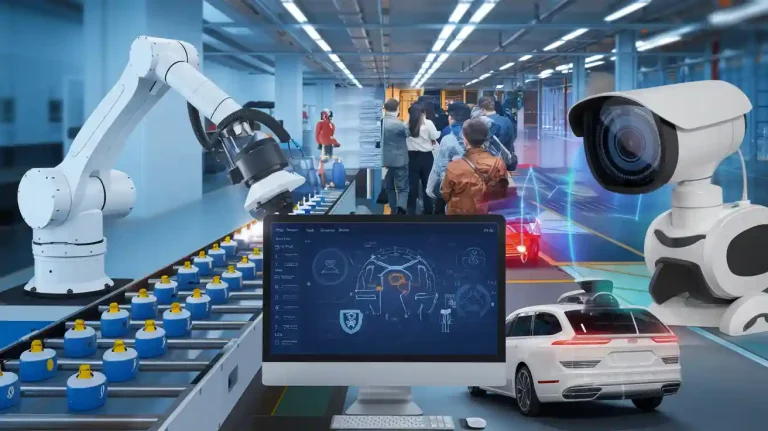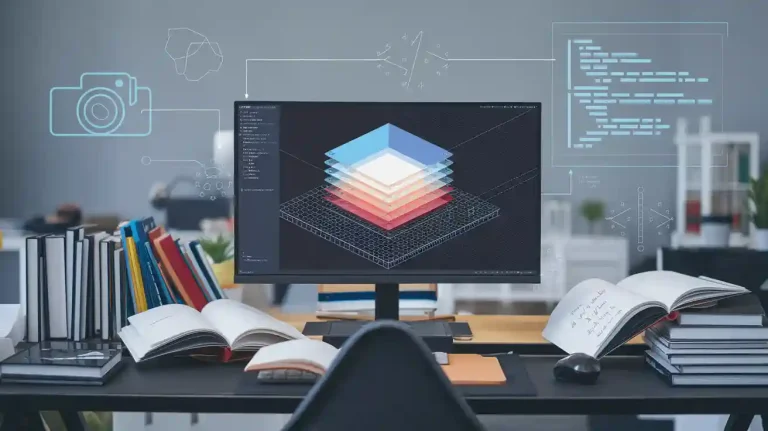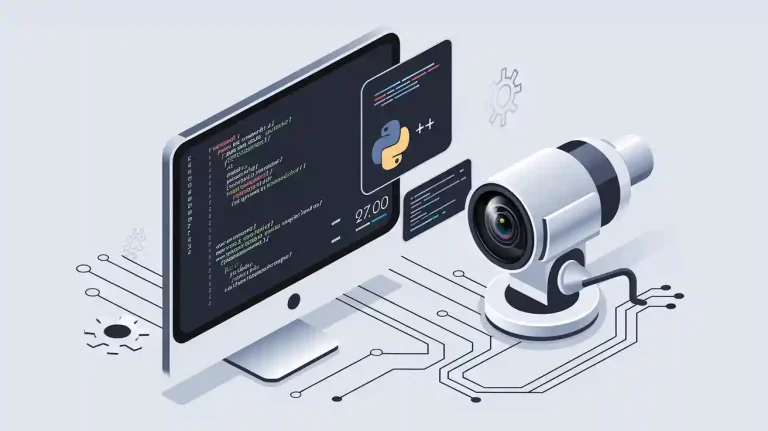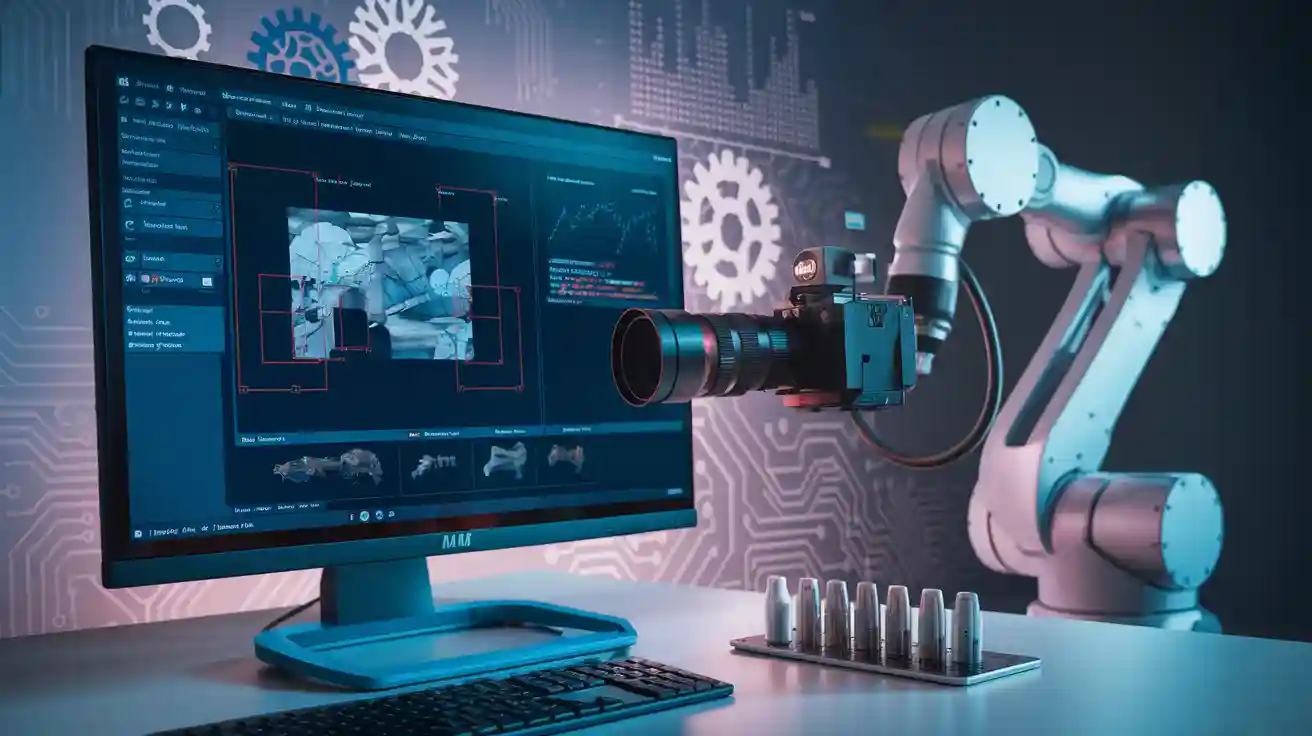
You can boost your image analysis by using a MATLAB machine vision system. MATLAB gives you powerful tools for computer vision. You get fast computation with its matrix and linear algebra library. The Computer Vision Toolbox covers many algorithms with easy-to-use interfaces. You can visualize results and debug your computer vision system in one place. MATLAB connects with OpenCV and offers clear documentation. Many researchers and engineers choose MATLAB machine vision system for its strong community and rapid prototyping.
Key Takeaways
- MATLAB offers powerful tools and toolboxes that simplify image and video analysis with easy-to-use features for object detection, tracking, and 3D vision.
- You can improve image quality and prepare data effectively using MATLAB’s image processing tools and interactive apps, which help get better results from your projects.
- Deep learning integration in MATLAB supports many pretrained models and lets you build, train, and deploy AI systems quickly for real-world applications.
- MATLAB and Simulink provide a complete workflow from coding to hardware deployment, enabling fast prototyping and reliable system testing on various platforms.
- Industries like manufacturing, healthcare, and research benefit from MATLAB machine vision systems by increasing accuracy, speeding up inspections, and supporting advanced diagnostics.
Key Features
Computer Vision System Toolbox
You can use the computer vision system toolbox in MATLAB to solve many image and video analysis problems. This toolbox gives you a wide range of algorithms and functions. You can work with both images and video streams. Here are some of the main features you will find:
- Visual inspection tools help you check images for defects or changes.
- Object detection and tracking let you find and follow items in video frames.
- Feature detection, extraction, and matching help you identify key points in images.
- Camera calibration supports single, stereo, and fisheye cameras for accurate measurements.
- 3D vision tools include stereo vision, point cloud processing, and structure from motion.
- Real-time visual and point cloud SLAM (simultaneous localization and mapping) help you build maps and track movement.
- Pretrained object detectors and custom training options use deep learning and machine learning models like YOLO, SSD, and ACF.
- Semantic and instance segmentation use deep learning models such as U-Net, SOLO, and Mask R-CNN.
- Image classification uses vision transformers like ViT.
- Pretrained models help with face and pedestrian detection, OCR, and other common tasks.
- You can speed up your work with multicore processors and GPUs.
- The toolbox supports C/C++ code generation for desktop prototyping and embedded vision system deployment.
You can use these features for many computer vision tasks. The toolbox also works well with Simulink, so you can design and test your computer vision system in a larger workflow. If you work in robotics, you can use these tools to help your robot see and understand its environment.
Image Processing in MATLAB
MATLAB gives you strong tools for image processing. The image processing toolbox and computer vision system toolbox work together to help you prepare and analyze images. You can use these techniques to improve image quality and get better results from your computer vision projects.
- Use image enhancement tools like contrast adjustment to make details clearer.
- Remove haze with the
imreducehazefunction. - Sharpen images with the
imsharpenfunction to highlight edges. - Filter images to remove noise and improve clarity.
- Convert images to binary for easier object identification and segmentation.
- Analyze regions and properties to detect and measure objects in images.
- Process many images at once with the Image Batch Processor app.
- Read and display images using
imreadandimshow. - Manage large datasets with
ImageDataStorefor efficient processing.
You can also use preprocessing steps such as resizing, cropping, noise removal, and color space conversion. Interactive apps like Image Labeler and Video Labeler help you label images and videos for training. You can apply augmentation techniques like geometric transformations and color changes to make your models stronger. These steps help you get the best results from your computer vision system.
Tip: Preprocessing during training saves storage space and makes your workflow faster.
Deep Learning Integration
You can boost your computer vision projects by adding deep learning. MATLAB supports many deep learning models, including convolutional neural networks (CNNs), LSTMs, GANs, and transformers. You can use built-in pretrained models like VGG, ResNet, and Inception. If you have models from other frameworks such as PyTorch or TensorFlow, you can import them using ONNX or other converters.
MATLAB gives you an end-to-end workflow for deep learning in computer vision. You can prepare data, build and train models, and visualize results. Interactive apps help you label data and train models with little code. You can use pretrained models directly, adapt them with transfer learning, or use them as feature extractors. Visualization tools like Grad-CAM and LIME help you understand how your models make decisions.
You can deploy your deep learning models to embedded hardware, enterprise systems, or the cloud. MATLAB and Simulink let you design, simulate, and test AI algorithms for real-time image analysis. Automatic code generation creates optimized code for embedded systems. You can use model compression techniques to make your models faster and smaller, which is important for real-time applications in robotics and other fields.
Note: These features help you build and deploy a MATLAB machine vision system that works in real-world settings, from research labs to factory floors.
Workflow Integration
MATLAB Environment
You can use the MATLAB environment to speed up your computer vision projects. MATLAB brings coding, data analysis, and visualization together in one place. You can write code, see results, and change your models quickly. Built-in functions help you with image processing, data augmentation, and model evaluation. You can use both scripts and graphical tools, which makes it easy to try new ideas. Visualization tools show you how your models perform with clear plots and charts. You can also import pre-trained models from other frameworks. This setup helps you build and test your computer vision models faster.
Tip: You can quickly move from a simple idea to a working prototype. This helps you find the best solution for your project.
Hardware and Simulink
You can connect your MATLAB machine vision system to many hardware platforms. MATLAB and Simulink let you generate code that runs on microprocessors, FPGAs, and real-time hardware like Speedgoat. This means you can test your algorithms on real devices. Simulink Real-Time and Speedgoat hardware help you achieve real-time processing for tasks like robotics or industrial inspection. You can use automatic code generation to deploy your models without writing extra code. MATLAB supports Windows, Linux, and Mac, so you can work on any major operating system. You can also use hardware-in-the-loop testing to make sure your computer vision system works well before full deployment.
End-to-End Computer Vision System
You can design, simulate, and deploy a complete computer vision system using MATLAB and Simulink. Start by preparing your data and building your AI models in MATLAB. Next, use Simulink to place your models into a larger system, such as a robotics system or an industrial machine. You can simulate the whole system to check how it works before using real hardware. Automated code generation lets you deploy your models to embedded devices, cloud platforms, or edge hardware. You can monitor and update your models after deployment, which keeps your system running smoothly. This end-to-end workflow helps you move from concept to production quickly and with fewer errors.
Note: This workflow supports many fields, including robotics, industrial automation, and smart cameras. You can use it to build reliable and efficient computer vision solutions.
Implementation
Setup and Installation
To start your machine vision project, you need to install MATLAB and the Computer Vision Toolbox. Follow these steps for a smooth setup:
- Open the MathWorks Installer or use the Add-On Explorer inside MATLAB to select the Computer Vision Toolbox.
- Make sure you have admin rights before you begin.
- Check that the toolbox version matches your MATLAB release.
- Close MATLAB before running the installer.
- If you use a custom folder, pick the correct location during setup.
- After installation, reset the MATLAB path if needed.
Tip: Only install the toolboxes you need, such as the image acquisition toolbox or data acquisition toolbox. This keeps your computer running fast and avoids long download times.
You may face slow downloads or confusion about which products to pick. Start with the core MATLAB product and add more toolboxes later. Save your license details in a safe place.
Building a MATLAB Machine Vision System
You can build a machine vision system in MATLAB by following these main stages:
- Collect and prepare your data using the data acquisition toolbox or image acquisition toolbox.
- Choose features that help your model learn.
- Select a model, such as a neural network, for your vision task.
- Train your model with your data.
- Test your model to see how well it works.
- Deploy your model for real-time use.
When you set up your hardware, pick a computer with at least 16 GB of RAM and an SSD. For faster work, use a GPU and make sure your power supply and cooling are strong enough. You can use MATLAB and Simulink to design, test, and tune your system before you deploy it.
Deployment and Scaling
You can deploy your machine vision system to many platforms. Use MATLAB Coder to create C/C++ code for CPUs. GPU Coder helps you run your models on NVIDIA GPUs. HDL Coder lets you use FPGAs for fast, real-time tasks. For large projects, MATLAB Production Server lets you run your models in the cloud or on clusters. Support packages help you connect to hardware like Xilinx Zynq or NVIDIA Jetson. This makes it easy to scale your solution from a small test to a big, real-world system.
Note: Always test your system on your computer before sending it to hardware. This helps you find and fix problems early.
Applications
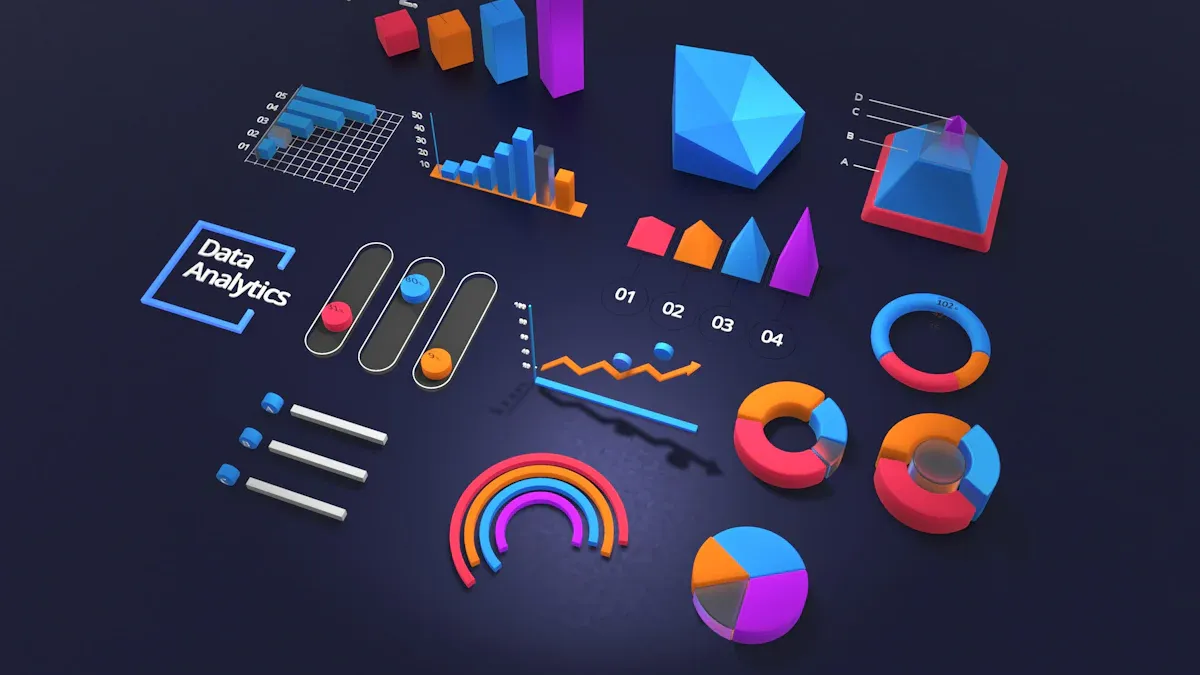
Industrial Computer Vision
You can use a matlab machine vision system to improve quality control and automation in factories. Many companies use these systems for tasks like predictive maintenance and defect detection. You can see real results in manufacturing. For example, companies report up to 15% higher accuracy in detecting problems compared to older systems. Inspection speeds increase by about 25%, which means you can check more products in less time. Some factories, like General Motors, have reduced material waste by 30%. Tesla has cut product defects by 90% using AI-driven quality control.
- You can:
- Detect defects in products with over 99% accuracy.
- Reduce training time for models by up to 40%.
- Scale your system to cover more production lines, improving efficiency by about 30%.
- Lower energy costs by 20% or more.
MATLAB lets you connect deep learning models to industrial hardware. You can design, train, and deploy models quickly. You can also build human-machine interfaces for easy monitoring. These tools help you automate visual inspection and reduce manual work.
Medical Imaging
You can use computer vision tools in MATLAB to analyze medical images. Hospitals and researchers use these tools to read and process images like DICOM files. You can improve image quality, detect tumors, and segment organs. For example, deep learning models help doctors find breast tumors in ultrasound images and segment the heart in MRI scans. These methods support early cancer detection and better treatment planning.
| Data Split | Normal Samples | Defected Samples | Total Samples | Total Images |
|---|---|---|---|---|
| Training Data | 57 | 43 | 100 | 6000 |
| Test Data | 23 | 12 | 35 | 2100 |
| Accuracy Metric | Normal Images | Defected Images | Overall Accuracy |
|---|---|---|---|
| Accuracy (%) | 67.05 | 87.18 | 67.43 |
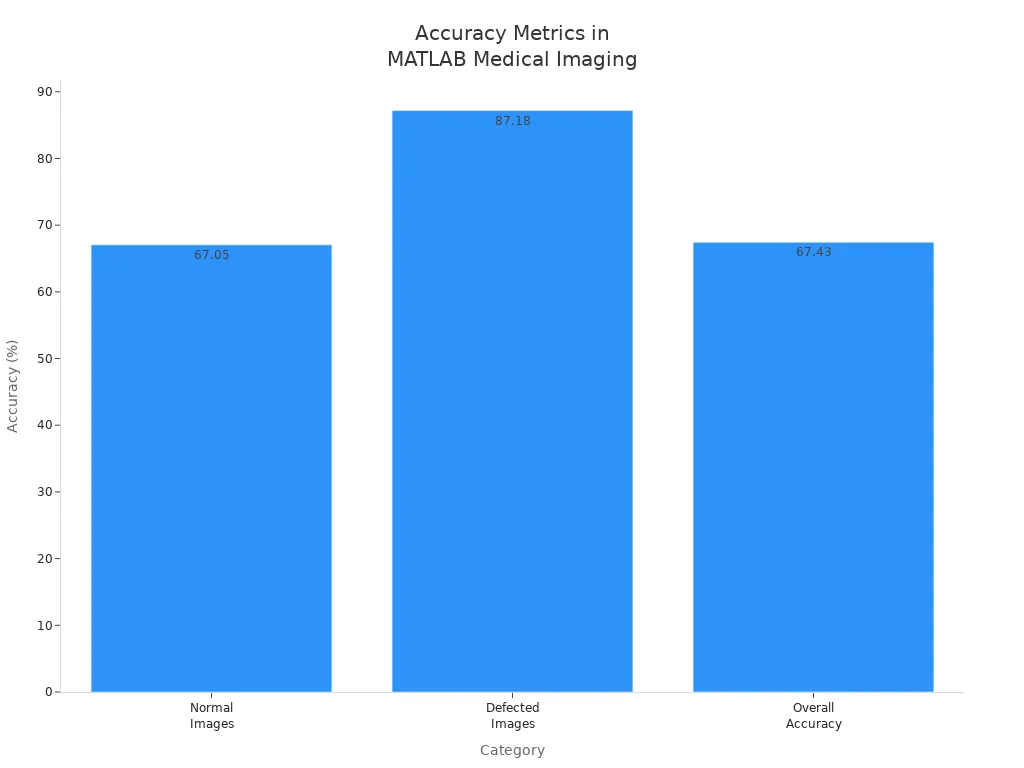
You can also use MATLAB to connect with deep learning frameworks like TensorFlow. This helps you build advanced diagnostic tools for video and image analysis in healthcare.
Research and Prototyping
You can use MATLAB for fast research and prototyping in computer vision. Many students and scientists choose MATLAB because it is easy to learn and has many built-in functions. You can test new ideas quickly and debug your code with helpful tools. The environment supports rapid development, so you can focus on your algorithm instead of fixing code errors.
- Benefits for you:
- Fast coding and easy debugging.
- Automatic memory management.
- Built-in tools for image and video processing.
- Support for custom algorithms and 3D vision.
- Many researchers publish new computer vision methods in MATLAB.
You can use MATLAB to build and test systems for robots, autonomous vehicles, and video analysis. This makes it a top choice for academic projects and new technology development.
MATLAB machine vision systems give you advanced tools for image analysis. You can use them in medicine, agriculture, and industry to automate tasks and improve accuracy. Many companies and researchers trust MATLAB for its strong support, easy integration, and reliable results. You get access to training, community forums, and helpful apps like Image Labeler.
Start your journey with MATLAB’s Computer Vision Toolbox. Try the tutorials, join the community, and see how you can transform your own projects.
| Support Aspect | What You Get |
|---|---|
| Documentation | Step-by-step guides and examples |
| Community | Forums and shared projects |
| Training | Online courses and certification |
FAQ
What is a MATLAB machine vision system?
A MATLAB machine vision system uses MATLAB tools to help you analyze images and videos. You can detect objects, measure features, and automate tasks. These systems work in many fields, like industry and medicine.
Do I need to know programming to use MATLAB for computer vision?
You do not need to be an expert. MATLAB has apps and examples that help you get started. You can use drag-and-drop tools or write simple code. You learn as you go.
Can I use MATLAB with my camera or hardware?
Yes, you can connect MATLAB to many cameras and devices. You use support packages to link your hardware. This lets you capture images and test your vision system in real time.
Tip: Check the MATLAB documentation for a list of supported devices.
How do I speed up my image analysis in MATLAB?
You can use a GPU or multicore processor to make your system faster. MATLAB supports parallel computing. You can also use code generation to run your models on embedded hardware.
Is MATLAB good for deep learning in computer vision?
Yes! MATLAB supports deep learning models like CNNs and transformers. You can train your own models or use pretrained ones. You can also import models from other frameworks, such as TensorFlow or PyTorch.
See Also
Understanding How Machine Vision Systems Process Images
A Deep Dive Into Synthetic Data For Vision Systems
Fundamentals Of Metrology Applied To Machine Vision







